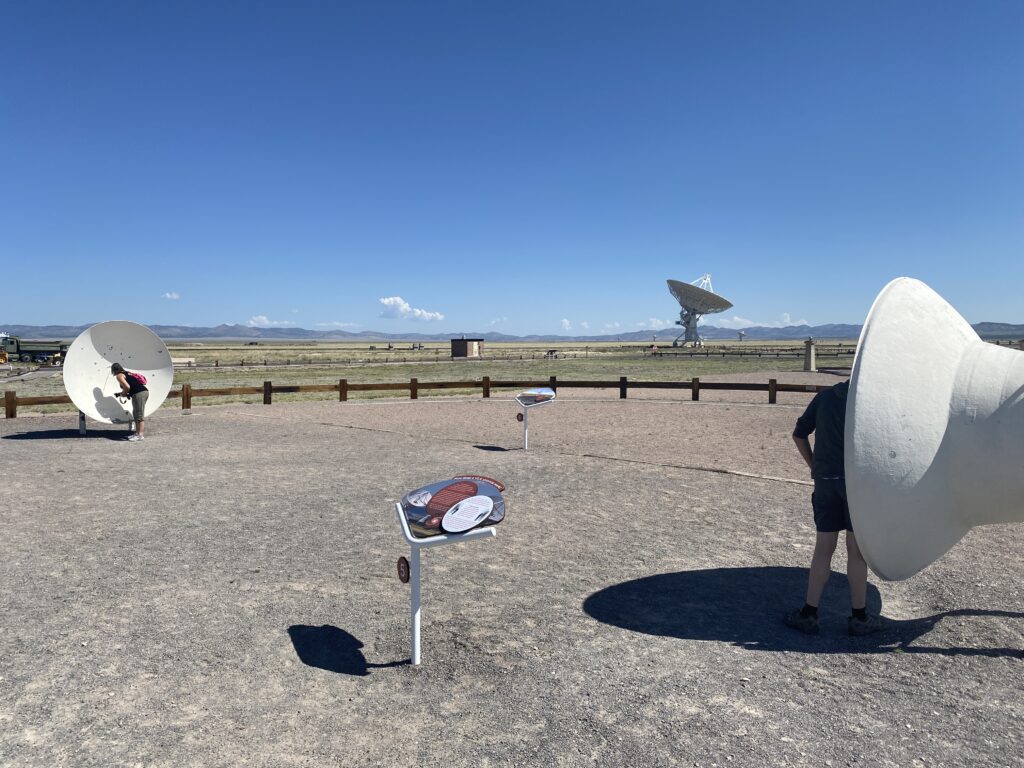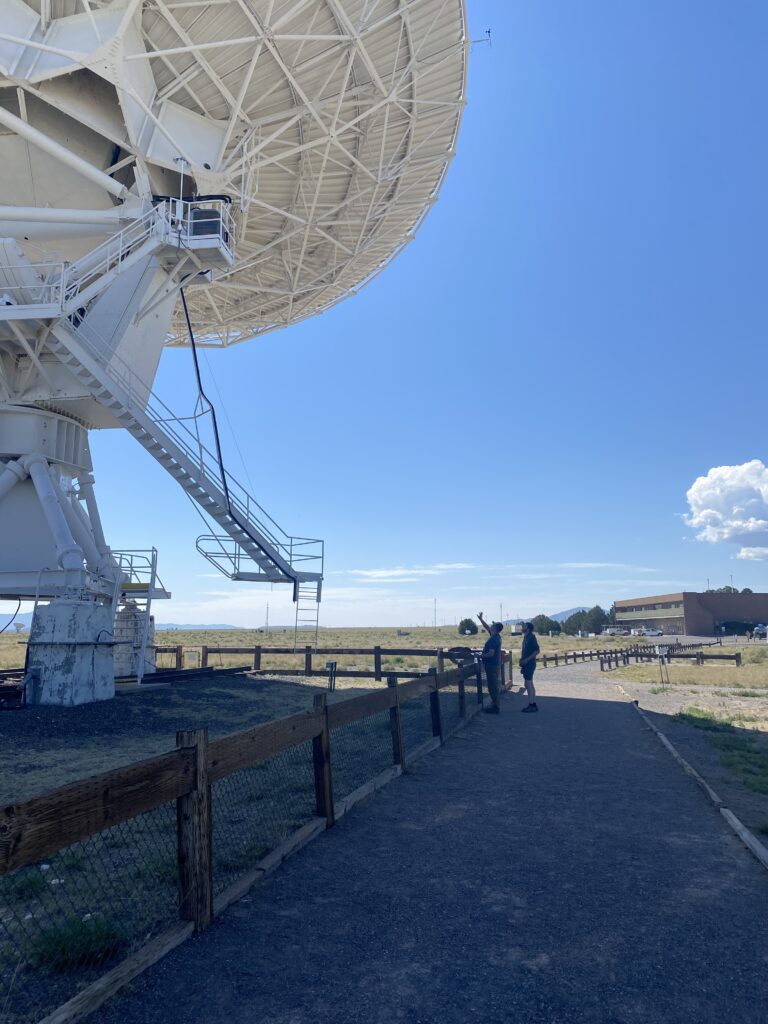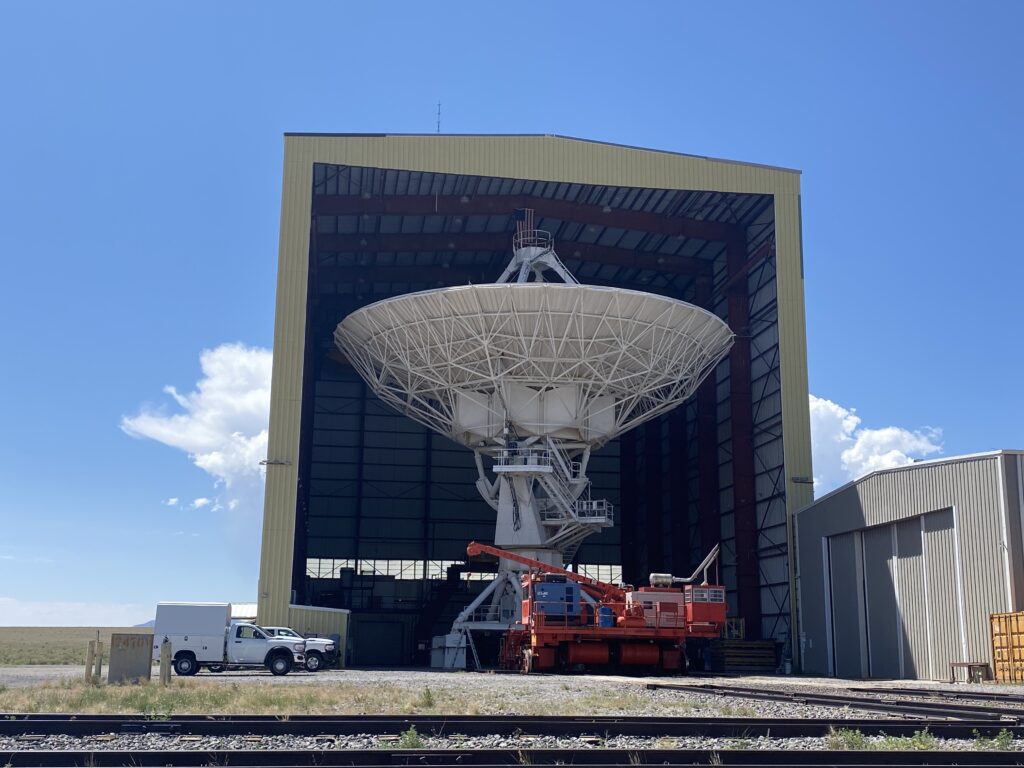For a quick summer trip, we decided to head to New Mexico for a short camping trip so Clayton could visit the Very Large Array.
Now to be perfectly honest, I had no idea what these things did, or what they are used for. All I knew is that it had to deal with space and Clayton would love it, plus I would get some good photo ops, so away we went. I also had a lot of camping gear that needed to be tested and reviewed so it was a win-win situation.
Very Large Array History
The idea for the Very Large Array began in the 1960s which would create a very large array of radio antennas that would work together to function as one giant telescope.
In 1972, Congress authorized the project and two years later site work began. Then in 1975, the very first Very Large Array antenna was assembled on site. By January 1981 all 27 antennas were complete. Almost 30 years later in 2012 the Very Large Array had old wiring replaced with almost 3,000 miles of fiber optics and was transformed by a new suite of receivers and a supercomputer.
It’s Purpose
The purpose of the Very Large Array is to observe the universe 24 hours a day gathering invisible light using radio wave technology. The radio waves allow astronomers to better understand dust clouds, galaxies, planets, stars, black holes, and more. It has made more discoveries than any other telescope on Earth.
Walking Tour
The Very Large Array offers a self-guided walking tour to the public which starts at the Visitor Center. After you check in at the gift shop, you will tour the visitors center where you will learn more about radio telescopes before heading out for the walking tour.
As you can tell from the picture below, Clayton was super excited about delaying the walking tour to learn about stuff he already knows. LMAO!

Solar Telescope
Once you are done inside you will leave out the backside of the visitor center and head to the solar radio telescope, where you can try your hand at making your own discoveries.

Bracewell Sundial
Next, you will head over to the Bracewell Sundial. Named after Ron Bracewell who passed away in 2007, the Bracewell Sundial is a radio sundial that tells the time of day, and time of year, as well as marking important dates and celestial objects in the history of radio astronomy.

Whisper Dishes
Next, you will head over to the Whisper Dishes to test out firsthand how the VLA antennas work. This will take at least two people and you will definitely spend more time here than you think. If you have three people it makes it even more fun as you can whisper about them =)
One person will be at each dish and the third in the middle, but not directly in line. Each person at the dish will whisper something and while the other person at the dish who is not speaking can hear the person speaking clear as day; the third person will hear nothing. It is a pretty cool experiment.

Very Large Array Antenna
Before stopping at the Very Large Array antenna you will have a couple more information stops, which I highly suggest you take the time to read. While the VLA antenna may seem small from a distance, once you are up close and personal you quickly realize just how massive one single VLA is. If you stick around long enough, you may get to see it move!


Very Large Array Storage
Once you get done with the walking tour you will drive over to tour stop 16 which is the Antenna Assembly Building. This is where they assemble and work on the Very Large Array antennas. You must stay in the parking lot, but it is still neat to watch them work.

Walking Tour Video
Know Before You Go
No Electronic Devices: All electronic devices (such as cell phones and tablets) must be placed in airplane mode AND turned off.
No Wifi / Bluetooth Devices: All wifi and Bluetooth devices such as smart watches, wireless headphones, fitbits, GPS devices, etc… must be turned off.
No Drones Allowed: drones are not allowed.
Pets are allowed. Must be kept on a leash and you must pick up after them
7000 ft elevation: Keep in mind you will be at 7000 foot elevation, it can be much cooler even in summer.
Cameras are allowed: You may bring your cameras for pictures and video
Advanced Ticket Purchase Required: They now require advanced entry purchase and it is on a timed admission basis. You can purchase tickets online here.
More Information
HOURS
Daily 9 am – 4 pm
Closed Thanksgiving, Christmas Eve, Christmas, New Year’s Eve, and New Year’s Day
COST
Adults (18-64) $6.00
Seniors (65+) $5.00
Children (Under 18) Free




Leave a Comment or Suggestion